Pluto’s Heart

Pluto’s heart
This high-resolution image captured by NASA’s New Horizons spacecraft shows the bright expanse of the western lobe of Pluto’s “heart,” or Sputnik Planitia, which is rich in nitrogen, carbon monoxide and methane ices.
Credit: NASA/JHUAPL/SwRI
More Posts from Intergalacticnerd and Others


T-2 hours - JASON-3 and Falcon 9 stand tall on the west coast. For the second time in its history, a SpaceX Falcon 9 v1.1 rocket stands at Vandenberg Air Force Base’s SLC-4E ready for launch. The 224 foot tall rocket will carry the joint NASA/NOAA JASON-3 satellite to study Earth’s oceans. Of the 20 flights of the Falcon 9 to date, all but one has occurred from Cape Canaveral’s SLC-40. The inaugural flight of Falcon 9 v1.1, Cassiope in September 2013, was also the debut of the vehicle on the west coast. The JASON-3 mission will see the final v1.1 Falcon 9 performing the vehicle’s second west coast flight. Liftoff will occur in the middle of a 30-second launch window, at 1:42 pm EST (10:42 am PST). NASA TV coverage started at 11 am EST. Watch the launch live here. p/c: SpaceX/NASA



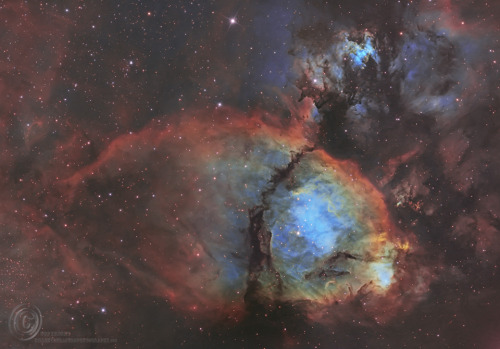
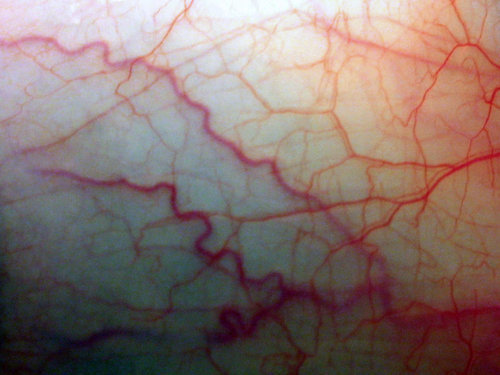
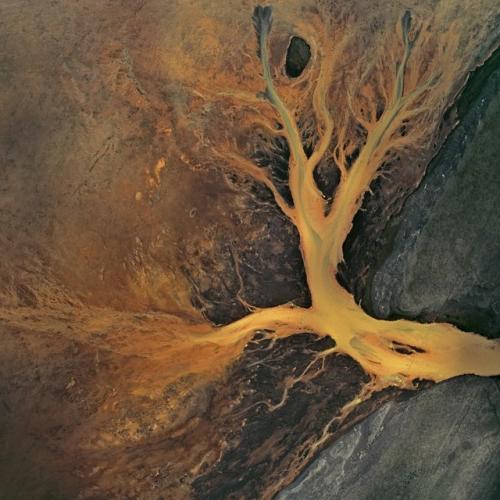

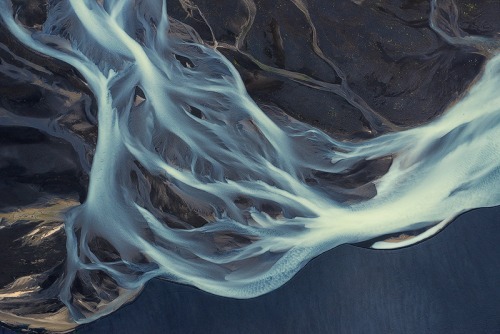
What Happened to Mars?
Billions of years ago, Mars was a very different world. Liquid water flowed in long rivers that emptied into lakes and shallow seas. A thick atmosphere blanketed the planet and kept it warm.

Today, Mars is bitter cold. The Red Planet’s thin and wispy atmosphere provides scant cover for the surface below.

Our MAVEN Mission
The Mars Atmosphere and Volatile EvolutioN (MAVEN) mission is part of our Mars Scout program. This spacecraft launched in November 2013, and is exploring the Red Planet’s upper atmosphere, ionosphere and interactions with the sun and solar wind.

The purpose of the MAVEN mission is to determine the state of the upper atmosphere of Mars, the processes that control it and the overall atmospheric loss that is currently occurring. Specifically, MAVEN is exploring the processes through which the top of the Martian atmosphere can be lost to space. Scientists think that this loss could be important in explaining the changes in the climate of Mars that have occurred over the last four billion years.
New Findings
Today, Nov. 5, we will share new details of key science findings from our ongoing exploration of Mars during a news briefing at 2 p.m. EDT. This event will be broadcast live on NASA Television. Have questions? Use #askNASA during the briefing.
Make sure to follow us on Tumblr for your regular dose of space: http://nasa.tumblr.com




Nobody believed me, but I knew you’d come back.

The Belt of Venus is a pink glowing arch seen across the sky when the shadow of the Earth’s translucent atmosphere casts a shadow back upon itself.

Grasping the stars 💫⭐








We used to look up at the sky and wonder at our place in the stars. Now we just look down, and worry about our place in the dirt.
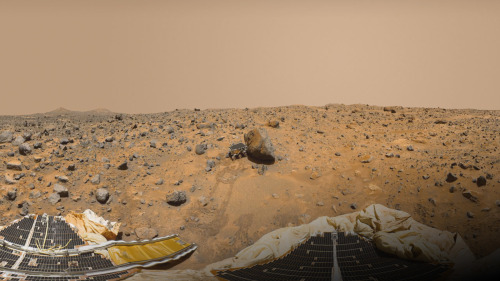
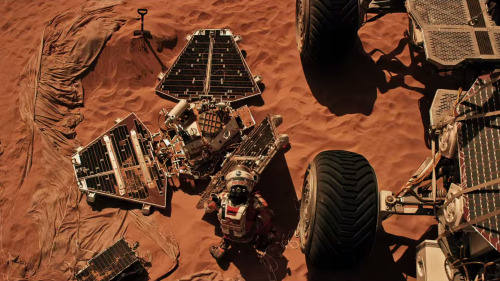
Mars Pathfinder & Sojourner Rover (360 View) Explained
Thanks to new technology, we can take a 360-degree tour of the 1997 Pathfinder mission landing site, including Sojourner, the first Mars rover. Check out this interactive YouTube panorama, and then…
…keep scrolling to find out more about each point of interest, how the Pathfinder mission compares to “The Martian” and NASA’s real Journey to Mars.

Yogi
“Yogi” is a meter-size rock about 5 meters northwest of the Mars Pathfinder lander and the second rock visited by the Sojourner Rover’s alpha proton X-ray spectrometer (APXS) instrument. This mosaic shows super resolution techniques applied to help to address questions about the texture of this rock and what it might tell us about how it came to be.

Twin Peaks
The Twin Peaks are modest-size hills to the southwest of the Mars Pathfinder landing site. They were discovered on the first panoramas taken by the IMP camera on the July 4, 1997, and subsequently identified in Viking Orbiter images taken over 20 years ago. They’re about 30-35 meters tall.

Barnacle Bill
“Barnacle Bill” is a small rock immediately west-northwest of the Mars Pathfinder lander and was the first rock visited by the Sojourner Rover’s alpha proton X-ray spectrometer (APXS) instrument. If you have some old-school red-cyan glasses, put them on and see this pic in eye-popping 3-D.

Rock Garden
The Rock Garden is a cluster of large, angular rocks tilted in a downstream direction from ancient floods on Mars. The rocky surface is comprised of materials washed down from the highlands and deposited in this ancient outflow channel.

MOAR INFO
Pathfinder Lander & Sojourner Rover
Mission Facts [PDF]
Science Results
Rock & Soil Types


This vista was stitched together from many images taken in 1997 by Pathfinder.

Pathfinder and Sojourner figure into Mark Watney’s quest for survival on the Red Planet in the book and movie, “The Martian.” See JPL’s role in making “The Martian” a reality: http://go.nasa.gov/1McRrXw and discover nine real NASA technologies depicted in “The Martian”: http://go.nasa.gov/1QiyUiC.

So what about the real-life “Journey to Mars”? NASA is developing the capabilities needed to send humans to Mars in the 2030s. Discover more at http://nasa.gov/journeytomars and don’t forget to visit me when you make it to the Red Planet. Until then, stay curious and I’ll see you online.
What music do you listen to most?
A wide variety. I created this Spotify playlist of the songs I’ve listened to most during my Year in Space.


It was just discovered that there is a large ocean of water deep within the surface of Saturn’s icy moon, Enceladus.
-
 geliherrera liked this · 1 year ago
geliherrera liked this · 1 year ago -
 rh35211 reblogged this · 3 years ago
rh35211 reblogged this · 3 years ago -
 star-in-bloom liked this · 3 years ago
star-in-bloom liked this · 3 years ago -
 sadangeltears liked this · 5 years ago
sadangeltears liked this · 5 years ago -
 xselfxtorturedx liked this · 5 years ago
xselfxtorturedx liked this · 5 years ago -
 mari-182 reblogged this · 5 years ago
mari-182 reblogged this · 5 years ago -
 deadmugen reblogged this · 5 years ago
deadmugen reblogged this · 5 years ago -
 jeebssred liked this · 5 years ago
jeebssred liked this · 5 years ago -
 psychofox8 liked this · 5 years ago
psychofox8 liked this · 5 years ago -
 captainjustcheckingthings liked this · 5 years ago
captainjustcheckingthings liked this · 5 years ago -
 essie-and-the-boundless-sea liked this · 5 years ago
essie-and-the-boundless-sea liked this · 5 years ago -
 steadygroundx liked this · 5 years ago
steadygroundx liked this · 5 years ago -
 taiscerayne2426 liked this · 5 years ago
taiscerayne2426 liked this · 5 years ago -
 thelitetravaler liked this · 5 years ago
thelitetravaler liked this · 5 years ago -
 ulk78 liked this · 5 years ago
ulk78 liked this · 5 years ago -
 glowinthedarkmouse liked this · 5 years ago
glowinthedarkmouse liked this · 5 years ago -
 starweird03 liked this · 5 years ago
starweird03 liked this · 5 years ago -
 anotherrandomrepostblog liked this · 5 years ago
anotherrandomrepostblog liked this · 5 years ago -
 masa1206ita liked this · 5 years ago
masa1206ita liked this · 5 years ago -
 totalitaylorism liked this · 5 years ago
totalitaylorism liked this · 5 years ago -
 hyperionova liked this · 5 years ago
hyperionova liked this · 5 years ago -
 ram-dragon-tm liked this · 5 years ago
ram-dragon-tm liked this · 5 years ago -
 saltythexfilesindianjonescop liked this · 5 years ago
saltythexfilesindianjonescop liked this · 5 years ago -
 emeraldsiren19 liked this · 5 years ago
emeraldsiren19 liked this · 5 years ago -
 morby reblogged this · 5 years ago
morby reblogged this · 5 years ago -
 thelitetravaler reblogged this · 5 years ago
thelitetravaler reblogged this · 5 years ago -
 comfortablebody reblogged this · 5 years ago
comfortablebody reblogged this · 5 years ago -
 guardingtheacewolf reblogged this · 5 years ago
guardingtheacewolf reblogged this · 5 years ago -
 guardingtheacewolf liked this · 5 years ago
guardingtheacewolf liked this · 5 years ago -
 shawnarichauthor liked this · 5 years ago
shawnarichauthor liked this · 5 years ago -
 sweater-sloot reblogged this · 5 years ago
sweater-sloot reblogged this · 5 years ago -
 gaias-path reblogged this · 5 years ago
gaias-path reblogged this · 5 years ago
"Astronomy compels the soul to look upwards and leads us from this world to another." - Plato
147 posts